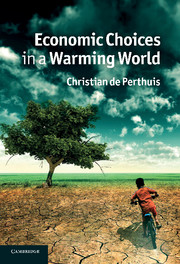Book contents
- Frontmatter
- Contents
- Acknowledgements
- Introduction
- 1 Climate risk
- 2 Some like it hot: adaptation to climate change
- 3 Building a low-carbon energy future
- 4 Pricing carbon: the economics of cap-and-trade
- 5 Intensifying agriculture to safeguard forests
- 6 The price of carbon: the economics of projects
- 7 Macroeconomic impacts: sharing carbon rent
- 8 International climate negotiations
- Conclusion
- References
- Appendix 1 Thirty key readings
- Appendix 2 Thirty key sets of figures
- Appendix 3 Greenhouse gas emissions around the world
- Glossary
- Index
6 - The price of carbon: the economics of projects
Published online by Cambridge University Press: 05 June 2012
- Frontmatter
- Contents
- Acknowledgements
- Introduction
- 1 Climate risk
- 2 Some like it hot: adaptation to climate change
- 3 Building a low-carbon energy future
- 4 Pricing carbon: the economics of cap-and-trade
- 5 Intensifying agriculture to safeguard forests
- 6 The price of carbon: the economics of projects
- 7 Macroeconomic impacts: sharing carbon rent
- 8 International climate negotiations
- Conclusion
- References
- Appendix 1 Thirty key readings
- Appendix 2 Thirty key sets of figures
- Appendix 3 Greenhouse gas emissions around the world
- Glossary
- Index
Summary
The village of Bagepalli is located in Karnataka, one of the states of southern India. The area is semi-arid. The inhabitants collect wood and plant residues for cooking their food and boiling water to make it safe to drink. This requires increasingly long journeys. Indeed the resource is disappearing: 75 per cent of the forest in Karnataka is no longer being replanted. The method of cooking using traditional baked clay ovens is relatively inefficient, and the resulting household waste is toxic.
The local government is trying to help the villagers by remedying the situation as quickly as possible. It subsidizes the use of kerosene, which most families cannot otherwise afford to buy. But this type of measure makes the population dependent on public monies without providing a sustainable economic answer. In health and environmental terms, it is frankly harmful. Kerosene exposes the inhabitants to more toxic residues than wood and emits more carbon dioxide (CO2) of fossil origin.
The local non-governmental organization (NGO), Women for Development, has worked for several years with the families from the village. In 2006, it was able to increase the scale of its work, thanks to the Clean Development Mechanism (CDM) introduced by the Kyoto Protocol. The mechanism allows carbon credits to be given to projects that reduce greenhouse gas emissions. Collecting wood from a deteriorating environment and the use of subsidized kerosene results in each family emitting on average 3.5 tonnes CO2 equivalent a year. In Bagepalli, the average family owns four cows.
- Type
- Chapter
- Information
- Economic Choices in a Warming World , pp. 146 - 168Publisher: Cambridge University PressPrint publication year: 2011



